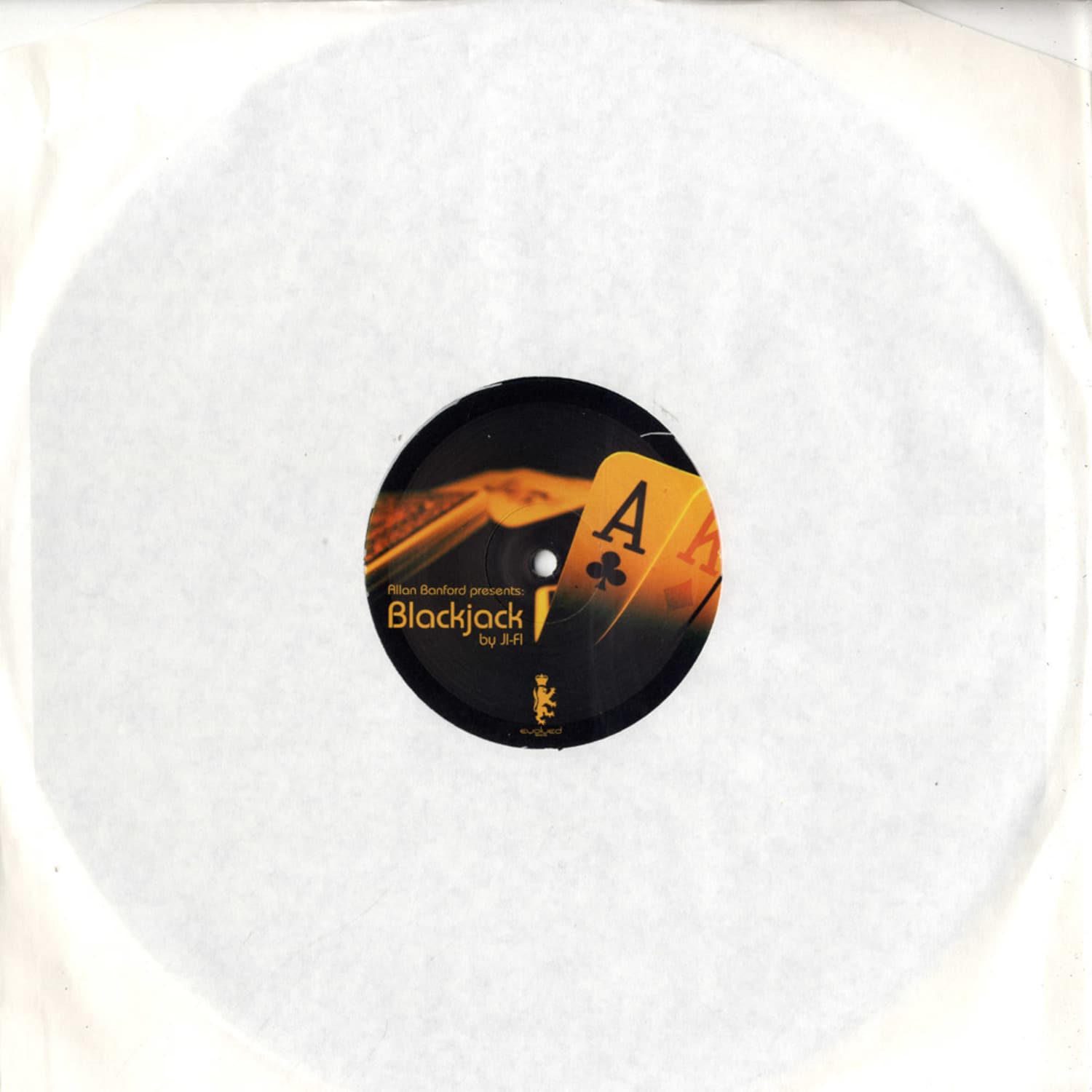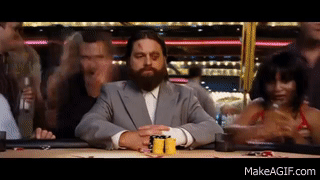Alan Blackjack
Before explaining a basic blackjack strategy, we should first consider our objective. There are many books that define the objective of blackjack as getting a hand as close as possible to 21. Unfortunately this is not always true. The objective in blackjack is to beat the dealer, and understanding this is your first step on the road to become a winning blackjack player. To win in blackjack it is possible to beat the dealer by holding a hand that is very far from 21– a 12 or 13, for example. It is important to remember that there are two ways to win: The first way to win is by having a hand with a higher total than the dealer. The second way is to have the dealer break or bust their hand. Most players seldom pay attention to the second form of winning. Players often think that they must always get as close as possible to 21. These players hit more often that they should and end up busting their hand and losing more often than they should.
Casino rules give the dealer one major advantage and one major disadvantage. The dealers major advantage is that he always draws last. If the dealer breaks after you have broken –which in reality is a tie – the dealer still wins that hand. The major disadvantage that the dealer has is that he must draw if he has 16 or less. This means that with hands totaling 12 to 16, it is possible that the next card may bust their hand. As a player you can capitalize on this handicap by making the right decisions about whether to draw or stand.
Alan Krigman was a weekly syndicated newspaper gaming columnist and Editor & Publisher of Winning Ways, a monthly newsletter for casino aficionados. His columns focused on gambling probability and statistics. He passed away in October, 2013. Blackjack has long fascinated-and defeated-players who think they have the system to win. Berg tells how he beat the odds at the blackjack tables again and again. He exposes the new tricks he discovered through his experiences and his strong relationship with statistics from his long career as a CPA. The standard multi-deck basic blackjack strategy can also be used in the two-deck game with the following exceptions: 9: Double down on dealer up-card of 2-6; not 3-6; 5, 6 or 7, 4: Double down against a dealer ace; hit if your 11 is 9, 2 or 8, 3. Basic Blackjack Strategy for Standard Single-Deck Blackjack. Alan Blackjack, free bonus casino australia, crown casino map perth, lights over morse lake poker run. Read our full review. PokerStars SCOOP 2020 GGPoker WSOP Online Super Circuit Oddschecker Poker League.
It’s true that most players lose because they hit too often and end up breaking their hand. There are those that unrealistically hope that the dealer will break and actually do not hit enough. You can not rely on a hunch when it comes to deciding whether you should hit or stand, logic must be used. If the dealer is showing a 2, 3, 4, or 5, you know that they must hit, no matter what the value of her hole card is. Knowing this you should stand on a lower hand value, such as 13, and wait for the dealer to break. Conversely, if the dealer has showing a high card (a 9 or 10), you would want to hit trying to get as close to 21 as possible. The logic behind this is that there is a very good chance that the dealer’s hole card is also high, and with a hand totally more than 16 they must stand.
Most recreational gamblers are unaware of the tremendous amount of research that has been done to provide blackjack players with the best possible basic blackjack strategy for playing the hands, which will take the advantage the casino has over the player down to the absolute minimum. To understand the strategy, you must remember the three variables involved in making blackjack decisions – your two cards and the dealer’s up-card. These three variables are expressed in about 550 different possible combinations, many of these decisions are similar, and it only takes about 30 rules cover all of them.
There are some small differences among the basic blackjack strategies which are a result of the use of more decks in the different games and rules variations between casinos. Generally, the multi-deck strategy is more conservative than the strategy used for a single deck game. A good example of this is the player’s hand of 11 versus a dealer up-card of ace. In the single deck game, the player has a better chance of drawing the 10, because there is only 52 cards in the deck. The correct play in this situation is to double down. The more cards in the multi-deck shoe game reduces the chances of drawing the 10, so the correct play in this situation to hit instead of doubling down.
Alan Blackwell

Basic Blackjack Strategy for Standard Multi-Deck Shoe Blackjack

Here are some typical casino rules for the standard multi-deck shoe games:


Double down on any two cards
Split pairs up to four times
Double down permitted after splitting
Dealer stands on soft 17 (A, 6)
Insurance permitted
Surrender not permitted
If the casino does not permit doubling after splitting, make the following modifications to basic blackjack strategy:
2, 2: Split on dealer up-cards 3-7, not 2-7
3, 3: Split on dealer up-cards 4-7, not 2-7
4, 4: Hit on dealer up-cards 5-6, do not split
6, 6: Split on dealer up-cards 3-6, not 2-6
If the casino permits surrender, surrender on the following hands:
9, 7 and 10, 6 against a dealer ace
9, 6; 9, 7; 10, 5; 10; 6 against a dealer 10 or face card;
9, 7 and 10, 6 against a dealer 9
The standard multi-deck basic blackjack strategy can also be used in the two-deck game with the following exceptions:
9: Double down on dealer up-card of 2-6; not 3-6;
5, 6 or 7, 4: Double down against a dealer ace; hit if your 11 is 9, 2 or 8, 3
Basic Blackjack Strategy for Standard Single-Deck Blackjack
Typical casino rules for the standard single-deck game are as follows:
Alan Poker Player
- Double down on any two cards
- Split pairs up to four times
- Double down not permitted after splitting
Dealer hits soft 17 (A, 6)
Insurance permitted
Surrender not permitted
Resources:
 Double Down Chart Hit and Stand Chart Splitting Pairs Chart
Double Down Chart Hit and Stand Chart Splitting Pairs ChartEvery once in a while a book reviewer finds a selection of books related, yet unrelated. The question: how to present them to an audience of people interested in how to make money, save money or justHoward Schwartz, the 'librarian for gamblers,' is the marketing director for Gambler's Book Club in Las Vegas, a position he has held since 1979. Author of hundreds of articles on gambling, his weekly book reviews appear in numerous publications throughout the gaming industry. Howard's website is www.gamblersbook.com “follow the money” (as they say in politics). Here are three books related to winning, betting and luck in their own way—you’ll understand the connection quickly.
Beyond Coincidence (Amazing Stories of Coincidence and the Mystery Behind Them) by Martin Plimmer and Brian King (277 pages, paperbound, $15.95) explores the improbable and the amazing luck people have—in gambling, history, sports, politics and life—including jinxes and curses, if you believe in such. The authors document three instances where an individual won the state lottery not once, but twice! Subsequently they ask questions about why luck isn’t more evenly distributed; what special qualities or mysterious powers are possessed by those lucky few upon who Dame Fortune invariably smiles and whether the inordinate amount of good fortune experienced by lottery winners is simple coincidence, or some mysterious birthright. Packed with details, a 12-page index of places, names and subjects, the work is written clearly and in fine entertaining style. It moves right along and should appeal to those who love to dream how Lady Luck may be courted, or who fantasize how to handle Dame Fortune should she come knocking on their door.
Alan Berg has written a fresh look at the game of 21 titled The Counting Game--An Accountant Reveals How to Win at Blackjack (207 pages, paper bound, $14.95). With a look at how the game is played in 2007 with casino rule “variants” and new playing conditions, the book teaches newcomers some fresh tricks, including how six and eight-deck shoes can be beaten and disguise techniques and how to obtain comps through intelligent play. Berg also tips you to places to play outside the United States and why; playing simultaneous hands; how to improve a bad game; some tips on playing in a tournament; some vital advice about paying taxes on winnings and keeping record of your play for the IRS. The book is written in a breezy, casual style, and should appeal to those who still hope to earn a living at the tables rather through a 9-to-5 job.
Alan Poker
Inside the Ropes by Arthur Mercante (230 pages, paperbound, $15.95) has a lot to say about the sport of boxing and of the key role the referee plays in deciding the outcome. It’s both a biography and history of boxing. Mercante is considered an elder statesman of the boxing world. For the person who bets on boxing, the book could be an eye-opener. What is the sign of a good referee? What makes a great fighter—or a champion? How does a referee keep “out of harm’s way?” Along the way, you’ll meet some of the greatest fighters in many divisions and learn through Mercante’s words and memory what the greatest bouts were and why. It’s about what a referee’s life is like on a personal level, how the game has changed.